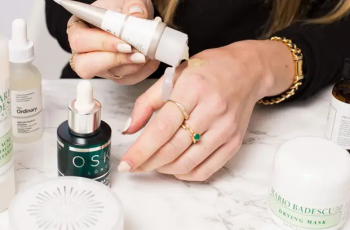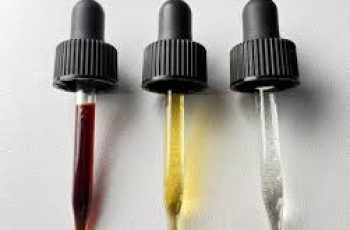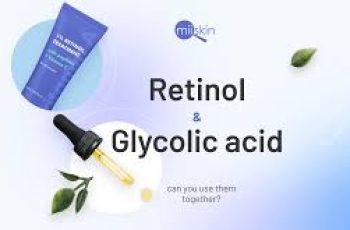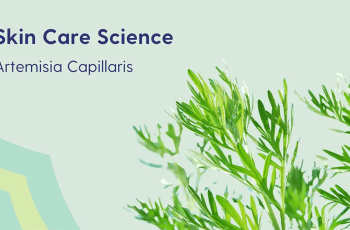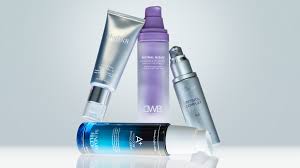
Is Retinol the Same as Retinoid? Here’s the Real Difference—and Why It Matters for Your Skin
Retinoids are some of the most studied and clinically backed skincare ingredients known for treating breakouts and reducing signs of aging like fine lines, wrinkles, and uneven skin tone.
They’re powerfully effective but also frequently misunderstood, with confusion often arising around the terms “retinol” and “retinoid,” which many people mistakenly believe are interchangeable.
In reality, while retinol and retinoids are closely related and belong to the same family of vitamin A derivatives, there are key differences in their strength, availability, and how they interact with your skin.
If you’ve ever been unsure whether to choose a product with retinol or wondered what makes a prescription retinoid so much stronger, you’re not alone—it can be confusing at first.
This guide breaks it all down so you can finally understand what these ingredients are, how they differ, and which one might be best suited to your skin and routine.
What’s the Difference Between Retinol and Retinoids?
The main difference between retinol and retinoids lies in their strength, chemical structure, and how quickly they deliver results to the skin when used consistently over time.
Retinoids are the umbrella category that includes all vitamin A derivatives used in skincare, including retinol, tretinoin, adapalene, and other prescription-only and over-the-counter forms.
Prescription-strength retinoids, like tretinoin or adapalene, are more potent and typically faster-acting but can also cause more noticeable irritation and require medical supervision.
These prescription retinoids are formulated to work deeply and rapidly, which is why they are usually recommended for stubborn acne or more advanced signs of aging.
On the other hand, retinol is a weaker, more stable form of vitamin A and is found in over-the-counter (OTC) products, making it more accessible for beginner use or sensitive skin.
Retinol must first be converted by the skin into retinoic acid before it becomes active, which is why it works more gradually and tends to cause less irritation.
What Exactly Is a Retinoid?
Retinoids are a broad class of vitamin A derivatives that increase cell turnover, boost collagen production, and help unclog pores to treat acne and improve skin texture.
Prescription-strength retinoids, such as tretinoin or isotretinoin, are highly active and commonly used under the supervision of a dermatologist to treat moderate to severe acne.
These formulations work by exfoliating the skin from the inside out, helping to shed dead cells, reduce oil production, and clear clogged pores that lead to pimples and blackheads.
Beyond acne, retinoids are considered the gold standard for reducing wrinkles, softening fine lines, fading dark spots, and improving skin firmness by stimulating collagen synthesis.
Most prescription retinoids are available only through medical providers due to their strong concentration and increased risk of irritation, peeling, or redness when misused.
Despite their power, retinoids do require patience and consistency; initial irritation is common, but with time, they help reveal smoother, clearer, and more youthful-looking skin.
What Is Retinol, and How Does It Work?
Retinol is a type of retinoid that is widely used in non-prescription skincare products and is often recommended for first-time users who want to start slowly with vitamin A.
Once applied to the skin, retinol undergoes a multi-step conversion process, first becoming retinaldehyde and then retinoic acid, before it can begin to deliver benefits to the skin.
This conversion means retinol is less intense than prescription options, but it also makes it more suitable for people with sensitive skin or those just starting a retinoid routine.
Retinol is known for gradually improving skin tone, minimizing breakouts, smoothing wrinkles, and boosting radiance—but results may take a few months to become visible.
Over-the-counter retinol products are often combined with other ingredients like hyaluronic acid, niacinamide, or ceramides to improve skin tolerance and minimize irritation.
Because of its gentler nature, retinol can be used more flexibly, and many users build tolerance with consistent use over time without the harsh peeling often seen with prescription formulas.
How to Identify Retinol in Skincare Products
Retinol can be found under various names on ingredient labels, including retinyl palmitate, retinaldehyde, retinyl acetate, and retinyl linoleate—each with its own potency and stability.
When choosing a product, check how high retinol appears on the ingredient list—ideally within the top 5 ingredients—though keep in mind that blends are often balanced with gentler actives.
More advanced formulations may use encapsulated retinol, which helps the active ingredient penetrate deeper into the skin while reducing surface irritation and improving overall tolerance.
If you’re just starting out with retinol, look for products labeled with strengths like 0.25%, 0.5%, or 1.0%, which indicate the concentration and allow for slow, controlled progress.
Is Retinoid Better Than Retinol?
If we compare them based purely on strength and clinical results, then yes—retinoids are more potent and work faster than retinol to improve acne and reduce signs of aging.
However, that doesn’t necessarily mean they’re “better” for everyone, especially if your skin is sensitive, prone to redness, or new to vitamin A-based skincare ingredients.
Retinol may be weaker than prescription retinoids, but it’s still highly effective when used consistently and is easier for most people to tolerate with fewer side effects.
For many skincare users, retinol offers the perfect balance of effectiveness and comfort, allowing them to enjoy similar benefits over time with less risk of irritation or flaking.
It’s also worth noting that while retinoids typically deliver faster results, they often come with a purging period and a greater learning curve for beginners.
Ultimately, whether retinol or retinoid is right for you depends on your skin concerns, tolerance level, and willingness to follow a more structured or medically guided routine.
Is Retinol Weaker Than Retinoid? Yes—and That’s Often a Good Thing
Think of retinol and retinoids as being in the same family but not identical twins—more like cousins who share a similar goal but go about it at different paces.
Retinol is weaker in concentration, making it gentler and easier to incorporate into daily skincare without overwhelming the skin or causing harsh reactions in the early stages.
Retinoids are stronger and more targeted, but they come with a higher risk of irritation, dryness, and peeling, especially if used without guidance or in high concentrations.
If your acne is severe or persistent, your dermatologist might prescribe a retinoid like tretinoin or adapalene to deliver stronger, faster results with close supervision.
But if your skin is mildly congested, showing early signs of aging, or just needs a refresh, then retinol is often the better and safer starting point for your skincare journey.
No matter which option you choose, it’s essential to introduce vitamin A products slowly—start with once or twice a week at night, and gradually increase frequency as your skin builds tolerance.
How to Safely Add Retinol (or Retinoid) to Your Routine
Begin by applying a pea-sized amount of your retinol or retinoid product in the evening to clean, dry skin, and always follow up with a gentle moisturizer to reduce dryness.
Avoid using exfoliating acids or other strong actives like benzoyl peroxide or AHAs on the same nights you apply retinol, especially when you’re still adjusting to the product.
Don’t forget to wear sunscreen every day—retinoids make your skin more sensitive to UV damage, so sun protection is non-negotiable while using them.
Stick with it! It often takes 8 to 12 weeks to start seeing visible results, so patience and consistency are key to getting the most from your retinoid or retinol product.
So, Is Retinol the Same as Retinoid? Not Exactly—But They’re Both Great
While retinol is a type of retinoid, the terms are not fully interchangeable—understanding the difference helps you choose the best product for your skin’s needs and comfort level.
Retinoids are stronger and available mostly by prescription, offering quick results but requiring more careful use and often more noticeable side effects.
Retinol, on the other hand, is easier to access, more tolerable for sensitive skin, and an excellent way to introduce your skin to the long-term benefits of vitamin A.
Both options stimulate collagen, speed up cell turnover, and help smooth your complexion, but how you get there—and how fast—depends on your chosen path.
Final Thoughts: Retinol vs Retinoid—Choose What Works Best for You
Whether you start with a mild retinol serum or consult your dermatologist for a prescription retinoid, the most important thing is that you’re using a form of vitamin A that fits your lifestyle.
If you’re consistent and patient, either choice can lead to brighter, clearer, firmer skin—and fewer breakouts or wrinkles along the way.
Have more questions about how to use retinol or retinoid in your routine? Feel free to reach out to us on Instagram or check out our beginner’s guide to using retinoids safely.
